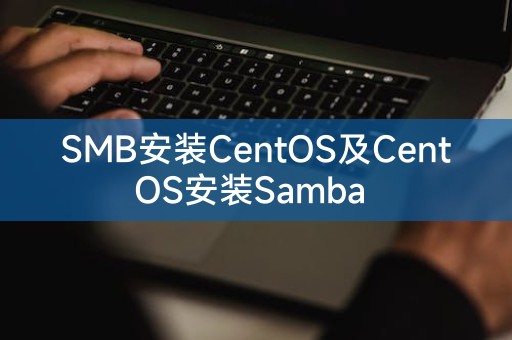
php editor Baicao brings you a tutorial on installing CentOS via SMB and installing Samba on CentOS. SMB is a protocol for sharing files and printers between different operating systems, and CentOS is a commonly used Linux operating system. Installing SMB allows us to easily set up file sharing and printing services on CentOS. This article will introduce in detail the installation steps of SMB on CentOS and how to install the Samba service on CentOS to help readers quickly master this skill.

CentOS, as a popular Linux distribution, provides a simple and fast way to install and configure Samba. Here are the steps to install Samba on CentOS:
Before installing any software, we should update the system to get the latest software packages and security patches, open a terminal and run the following command as root user:
```
yum update -y
This command will update the system and install any available updates.
After updating the system, we can start installing Samba by running the following command:
yum install samba -y
This command will download and install Samba from the CentOS software repository software package.
After the installation is completed, we need to configure Samba to achieve file sharing. The Samba configuration file is located at `/etc/samba/smb.conf`. We can use any text editor to open the file and proceed as needed. Change.
In the configuration file, we can define shared directories, user access permissions, workgroups, etc. The following is a simple example configuration, which you can modify according to your own needs:
[ shared]
comment = Shared Folder
path = /path/to/shared/folder
browseable = yes
writable = yes
valid users = @smbgroup
The above configuration defines a shared directory named "shared" with the path `/path/to/shared/folder`. Only users in the "smbgroup" group can If you have permission to access the shared directory, you can add more shared directories and user permission settings as needed.
After completing the configuration, we need to start the Samba service and set it to start automatically at boot. Run the following command:
systemctl start smb
systemctl enable smb
The above command will start the Samba service and set it to start automatically at boot.
If the firewall is enabled on your system, you need to set the corresponding firewall rules to allow Samba traffic to pass, run the following command:
firewall-cmd --permanent --add-service= samba
firewall-cmd --reload
The above command will allow Samba traffic to pass through the firewall.
After completing the above steps, you can try to access the Samba share. In Windows system, open the resource manager and enter the following address:
\\\shared
`` is the IP address of your CentOS system, and "shared" is the name of the shared directory you defined in the configuration file.
If everything is fine, you should be able to access and use the files shared by Samba.
In Linux, there is a very useful command called `grep`. The `grep` command is used to search for a specified pattern in a file and print out the matching lines. It is a powerful text Search tools to help you quickly locate and find content in files.
If you want to find lines containing the keyword "smb" in a text file, you can run the following command:
grep "smb" filename.txt
The The command will output all lines containing the keyword "smb".
The `grep` command also supports the use of regular expressions, making the search more flexible and powerful. You can use different options and parameters to further customize and optimize the search results.
Hope this little knowledge is helpful to you!
The above is the detailed content of SMB installs CentOS and CentOS installs Samba. For more information, please follow other related articles on the PHP Chinese website!




